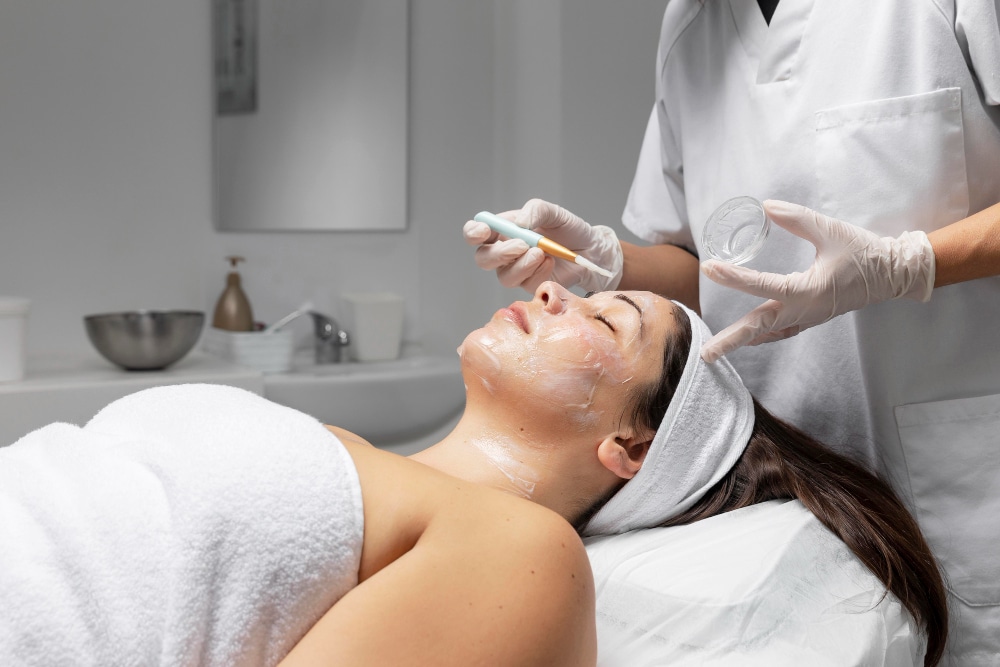
Chemical peels are cosmetic treatments used to rejuvenate the skin by applying a chemical solution that causes controlled damage at specific depths, prompting the shedding of old skin and regeneration of smoother, blemish-reduced skin. Initially developed in the 1950s using phenol for acne scars, modern techniques now utilize agents like trichloroacetic acid (TCA) and alpha hydroxy acids (AHAs) to target varying skin depths with improved safety and faster recovery times.
Chemical peels effectively address aging signs such as dullness, discoloration, wrinkles, and loss of elasticity, making them popular in aesthetic practices. Understanding their types, mechanisms, outcomes, potential risks, contraindications, and interactions with products like Ellanse is crucial for selecting the right treatment, highlighting the importance of thorough research and training in their application.
Chemical peels are versatile aesthetic treatments designed to rejuvenate skin by inducing controlled damage and subsequent regeneration. Originating with phenol in the 1950s, modern peels now utilize agents like TCA and AHAs for varying depths and effects. Understanding these peels is crucial for safe and effective treatment selection in aesthetic practice.
Chemical peels are categorized by their depth of penetration:
Peel depth depends on multiple factors beyond solution concentration, including pH, skin condition, application method, and duration. Adjusting these variables can transform a superficial peel into a medium-depth treatment, impacting outcomes significantly.
Emerging trends include combining different agents like Jessner’s solution and glycolic acid with TCA for enhanced efficacy and reduced side effects. This approach leverages synergistic effects to optimize treatment outcomes.
Prior to peeling, meticulous skin preparation is essential to mitigate risks like post-inflammatory hyperpigmentation (PIH) and ensure optimal rejuvenation. Regimens typically involve AHA cleansers, retinol, skin-lightening agents, and SPF products for at least two weeks pre-treatment.
Medium-depth peels, often employing 35% TCA combined with agents like Jessner’s or glycolic acid, effectively treat photoaging and pigmentation. These peels require careful preconditioning to enhance TCA penetration for uniform results.
Techniques in Medium Peels
Post-Treatment Expectations
Following medium peels, initial swelling and tightness are common, followed by skin exfoliation over several days. Patients experience improved skin tone, reduced blemishes, and softened wrinkles over subsequent weeks as new skin emerges.
Phenol is the primary agent for deep peels, penetrating to the reticular dermis for profound wrinkle and scar treatment. Due to its potency, deep peels require meticulous patient selection and thorough pre-treatment preparation.
Techniques in Deep Peels
Prudent patient selection based on medical history and skin assessment is crucial to minimize complications. Factors like smoking, immunocompromised status, and recent skin procedures impact candidacy and treatment outcomes.
Chemical peels offer effective solutions for skin rejuvenation, though understanding their complexities and risks is essential. Practitioners must tailor treatments to individual needs, utilize appropriate techniques, and prioritize patient safety to achieve optimal aesthetic outcomes.
Join our newsletter to receive latest news and offers

Medicle MD Ltd
Reg. Number: 14317237
Address: 27 Old Gloucester Street,
WC1N 3AX London,
United Kingdom
Our website is intended solely for people who use medical devices, such as dermal fillers, as professionals. It may contain product advertisements targeted only at such people. To enter Nu Derma Supply, please confirm that you are such a person (e.g. a medical professional, cosmetologist, service technician, etc.).